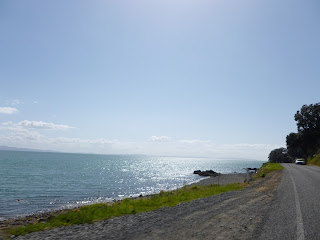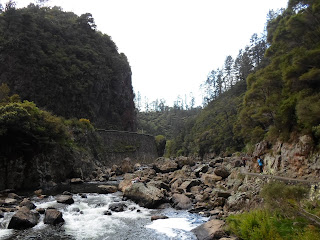After our cultural experiences in Rotorua we headed North to the Coromandel Peninsula. So we pulled out the map, checked our reservations for accommodation, and asked Google for the best route to get from point A to point B. Per Google, Hwy 25 was the way to go. As we got closer, signs told us that Hwy 25 is the Pacific Coast Highway. I have never driven the American PCH down the California Coast, but I figure this is a start.
I have often found while driving around New Zealand that being in the driver seat is the best way to avoid getting carsick, but the worst way to continually take in the views. This journey was no exception, as each curve seemed more breathtaking than the last. The road was narrow, winding, and at times seemed like we were literally driving on the waters edge. There was very little between us and high tide. It is not a road to drive if you are in a hurry; I would be surprised if we ever got over 60 kph (about 40 mph). But the gorgeous views were worth every minute of the drive. We drove from one quaint little fishing town to the next, beaches on one side of the road, holiday bachs on the other. I think we saw at least twice as many bait shops as we did gas stations :)
As we made our way up the coast close to our destination (Coromandel Town), we climbed to the top of a massive hill (by we climbed, of course I mean coaxed the car up, it is not the biggest fan of oversized hills). We were rewarded with gorgeous views, and a mobile ice cream van :) Totally worth it!
Coromandel Town:






















































